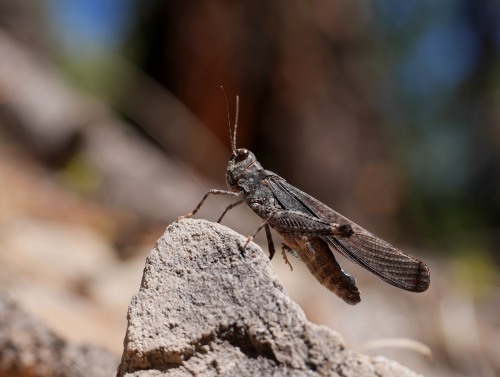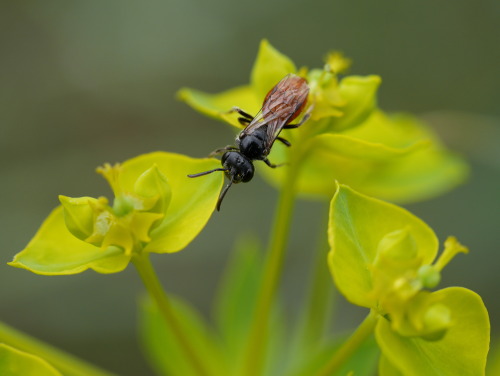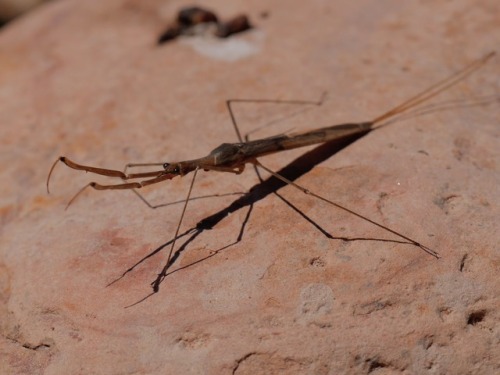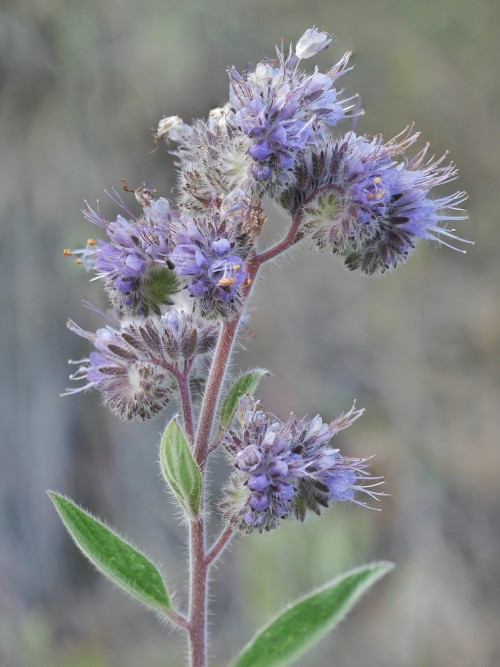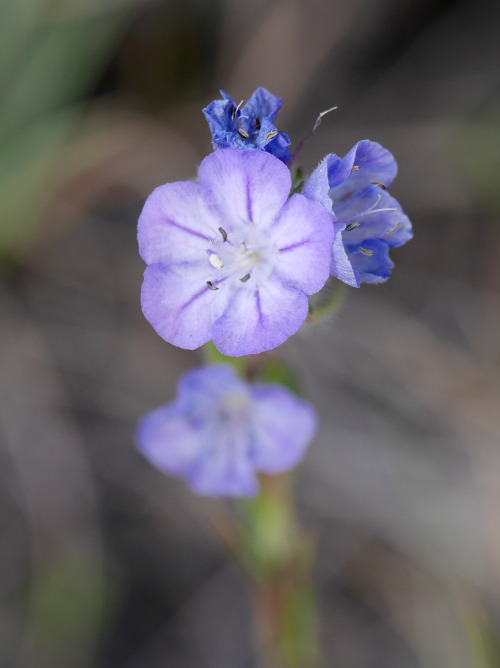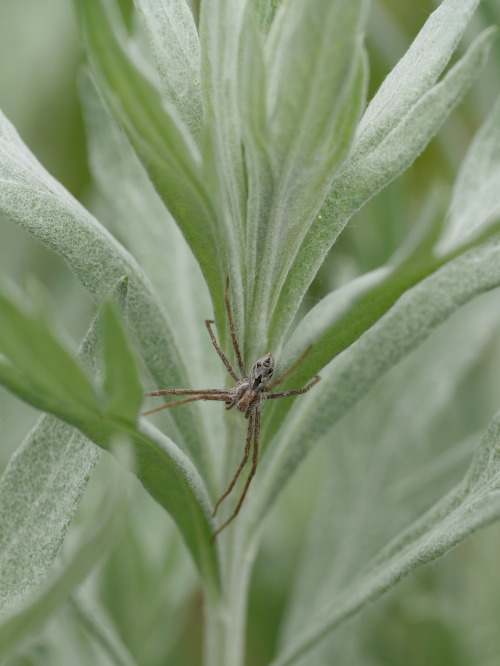#lolo national forest
Trimerotropis verruculata suffusa “Crackling Forest Grasshopper” Acrididae
Mt. Sentinel, Lolo National Forest, MT
September 12, 2015
Robert Niese
BugGuide has become an indispensable resource for all my insect identification needs, but rarely do I come across pages so eloquently and comprehensively written as those by David Ferguson. His passion for band-winged grasshoppers makes these entries a joy to read:
“T. verruculata suffusa is one of the most common and conspicuous Band-wing Grasshoppers in open pine forests of the Rockies and Sierras, where it can be seen (and heard) on most any warm summer or autumn day. The “crepitation” produced in flight is a relatively loud crackling sound, and sometimes males will hover and crackle for several seconds at a time. Never is it so loud and conspicuous as Circotettixspecies (to which it is related and similar), but nearly so.”
Post link
Blue and violet wildflowers in-bloom in the first week of June
(from top-to-bottom, left-to-right: Penstemonsp.,Mertensia longiflora,Delphinium bicolor,Lupinus sericeus,Viola adunca,Linum lewisii,Mertensia paniculata)
Lolo National Forest, MT
June 2014, 2015, 2016
Robert Niese
I finally have an instagram with loads of not-so-sciencey nature and personal content! Feel free to drop by and peak into the life of a nerdy natural historian! www.instagram.com/robertniese/
Post link
Sympetrum corruptum “Variegated Meadowhawk” Libellulidae
Blue Mountain National Recreation Area, MT
May 13, 2016
Robert Niese
As its name might suggest, these dragonflies are quite variable. So much so, that I’m questioning this ID (corrections would be very much appreciated). For more info on how to identify PNW odonates, check out this field key from the Slater Museum of Natural History. S. corruptum is a relatively common dragon found throughout much of northern North America near boggy meadows, swamps or ponds. During migration, however, it can be found wandering through just about any habitat from Honduras to Mongolia. Dragonflies are impressive migrators and some species can regularly travel 100 miles in a single day.
Post link
Sphecodes(arvensiformis) “Cuckoo Sweat Bee” Halictidae
onEuphorbia esula “Leafy Spurge” Euphorbiaceae
Blue Mountain National Recreation Area, MT
May 16, 2016
Robert Niese
Sphecodesbees are cleptoparasitic, cuckoo-like bees that lay their eggs in the nests of other sweat bees. Despite their outward appearance, these insects are not wasps, but they have converged on a very cuckoo-wasp-like life-history strategy. A female enters the nests of another Halictid, consumes a developing egg and replaces it with her own. Unfortunately, these bees, like the vast majority of Halictids, are very poorly studied and there are few entomologists capable of accurately identifying them beyond the genus level. Oh, and by the way, Leafy Spurge, while it is one of Missoula’s most widespread invasives, is also one of my favorite spring plants. They’re just such odd organisms! More photos and natural history info to come, I’m sure.
Looking back at my other photos of these bees from years ago makes me realize how far my skills as a photographer and natural historian have progressed.
Post link
Hygrophorus speciosus “Brilliant Wax-cap” Basidiomycota
Blue Mountain National Recreation Area, MT
May 16, 2016
Robert Niese
The wax-caps were once considered to all be members of the genus Hygrophorus, but have recently been divided into several new genera, all of which are still taxonomically debated. This particular species remains in the genus Hygrophorus due to its ectomicorrhizal growth habit. You can find it in drier, east-side forests where larch is abundant.
Post link
Ranatra fusca “Brown Waterscorpion” Nepidae
Lake Inez, Lolo National Forest, MT
May 23, 2017
Robert Niese
There’s something genuinely unnerving about insects viciously preying upon vertebrates, and waterscorpions are superbly specialized for this terrifying task. They sit near the surface of the water, head down, with their elongated, raptorial front limbs outstretched, waiting. Their long paired “tails” remain in contact with the water’s surface like a snorkel, allowing them to breathe while fully submerged. When some unlucky fish or tadpole swims too close, they snap them up like a mantis and immediately stab them with their sucking mouthparts. Their saliva both subdues and begins to digest their prey, allowing them to suck out the animal’s insides. On a completely unrelated note, this individual looks worse for wear, which led me to discover that adults actually overwinter in lakes and ponds here in Montana – not an easy task considering that most bodies of water freeze-over completely at some point. So apparently they’re indestructible AND hyper-specialized predators. Thank goodness they’re only five inches long.
Post link
Phacelia heterophylla “Varileaf Scorpionweed” Hydrophyllaceae/Boraginaceae
Mt. Sentinel, Lolo National Forest, MT
June 13, 2016
Robert Niese
As I mentioned in my last post, I’m not very familiar with members of the genus Phacelia, but this species perfectly exemplifies why they have received the common name, “scorpionweeds.” Those tightly coiled flower heads will progressively unravel until they’re long and straight (a very Boraginaceaous growth pattern). P. heterophylla is an abundant, weedy species in our area, and, unlike elsewhere in its range where their flowers are drab and white, here in Missoula ours tend to be deep lavender in color!
Post link
Phacelia linearis “Thread-leaf Phacelia” Hydrophyllaceae/Boraginaceae
Mt. Sentinel, Lolo National Forest, MT
June 13, 2016
Robert Niese
I can’t say I’m particularly familiar with the genus Phacelia. In fact, I was quite stumped when I first photographed this flower on the trails behind the university. Turns out, Phaceliahas perplexed botanists as well over the last few decades as well. Most members of this genus are called scorpionweeds (for obvious reasons which I’ll elucidate in my next post), but this particular species is definitely not recognizable as such. Its large, broadly campanulate flowers are not what I immediately associate with members of Hydrophyllaceae either. What’s more, the family Hydrophyllaceae is now accepted as a subfamily within Boraginaceae, and this plant absolutely does not remind me of forget-me-notsandbluebells. So in summary, the Thread-leaf Phacelia is an oddball in the world of Phacelias and the genus Phaceliais generally also odd as a member of Hydrophyllaceae which, oddly enough, has odd traits that do not conform to those that tend to be most common in the family Boraginaceae, to which it now belongs.
Post link
Philodromus histrio “Theatrical Running Crab Spider” Philodromidae
Blue Mountain National Recreation Area, MT
May 16, 2016
Robert Niese
I have no idea why this species of running crab spider has been given the species epithet “histrio.” In Latin, histriomeans “actor” or “player.” Perhaps the arachnid’s propensity for waving its arms about whenever a predator (or camera) approaches earned it this descriptor. Or perhaps some early entomologist first encountered it engaged in an impressive act of twig-impersonation. In fact, when I first stumbled upon this individual, its legs were perfectly aligned in the shape of an X and pressed flat against the underside of this Artemisiastem, perhaps hoping to be mistaken for plant matter. Regardless, these Philodromids are widespread, common, and relatively recognizable. Look for them in northern latitudes and in the Rockies anywhere you might find weedy Asteraceous plants like Artemisia,Tanacetum,Centaurea, or Senicio (yes, I know, that encompasses just about every habitat).
Post link

